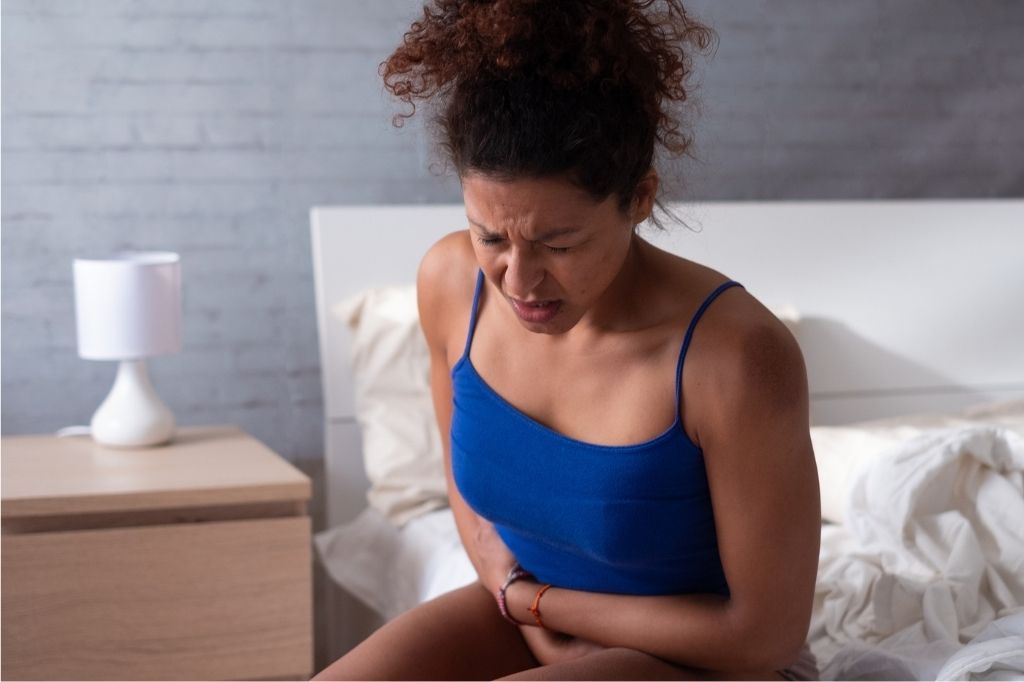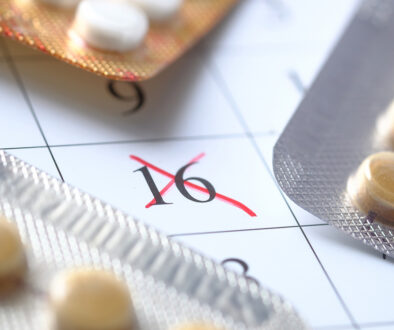5 Reasons Why You Might Have Painful Periods
For millions of women across the country, the dreaded once-a-month “visitor” brings with it pain, bloating and a disruption to the routines of everyday life.
More than half of all women experience some type of pain for at least 1 or 2 days for each cycle. For some women, the pain is so severe that it affects their daily routine for several days. Symptoms such as diarrhea, vomiting, dizziness and headaches can also accompany periods.
But why are periods so painful?
We’ll take a look at the main reasons behind it, what you can do and how we can help.
What Happens During Your Period?
To get to the heart of the issue of painful periods, it helps to have a better understanding of what happens to your uterus when you are menstruating.
Your period occurs when the uterus sheds its lining. The resulting bleeding typically lasts from 4 to 8 days.
Your body also releases prostaglandins which make your uterus contract in order to shed its lining. The more prostaglandins there are, the more intense your cramping will be.
Why Do I Have Painful Periods?
The medical term for intense menstrual pain is dysmenorrhea, and there are two types.
Primary dysmenorrhea is the type most often related to when discussing period pain that is not caused by another condition. The good news is typically this type of pain decreases as you age. Sometimes the pain may improve after you’ve given birth.
Secondary dysmenorrhea is typically due to another condition that affects your reproductive organs. Examples of secondary dysmenorrhea include uterine fibroids and endometriosis.
5 Reasons for Painful Cramps Include:
1. Hormonal changes
As mentioned earlier, prostaglandins often cause uterine cramping during your period. If you have a higher level of them, your menstruation cycle will be more painful.
2. Problems with the Uterine Lining
Whenever the lining is located outside the uterus, the result can be more intense cramping.
For example, in endometriosis, the uterine lining can grow on areas such as the bladder, ovaries or fallopian tubes.
Another disorder, called adenomyosis, occurs when the lining grows inside the muscle wall of the uterus.
3. Fibroids
These are noncancerous growths that can be found around or inside the uterus. While they’re most likely to occur in women aged 30 to 40, they can happen at any age. Symptoms of fibroids include:
-
-
- Heavier menstrual periods
- Bleeding at times other than your period
- Anemia
- Abdominal or back pain
- Pain during intercourse
- Difficulty conceiving
- Constipation
-
We can treat fibroids with medication. In cases where medication isn’t effective, the fibroids can be surgically removed.
4. Structural Problems with Your Reproductive Organs
Some women may be born with structural problems of the uterus or fallopian tubes. These can contribute to painful periods.
5. Pelvic Inflammatory Disease (PID)
This occurs when there’s an infection in your uterus or other reproductive organs. It’s often due to an untreated STD, although other types of infections can also cause PID.
Symptoms of PID are:
-
-
- Pain in the lower or upper right abdomen
- Fever and chills
- Abnormal bleeding
- Nausea
- Vomiting
- Painful intercourse
- Abnormal vaginal discharge
-
Typically PID can be treated easily with antibiotics. Because other diseases may have similar symptoms, it’s important to be evaluated by one of our doctors.
What Can I Do About Painful Periods?
There are several home remedies that can help ease painful periods. For example, you may use a heating pad or hot water bottle. In certain cases, getting exercise can help, and even taking a hot bath can provide some relief.
You may also want to try yoga, meditation and other relaxation techniques.
NSAIDs, a type of over-the-counter pain reliever, can not only help alleviate pain, but it can also reduce the number of prostaglandins, reducing your cramps. Examples of NSAIDs include naproxen and ibuprofen.
When Should I See a Doctor?
You should schedule an appointment with us if the pain from your period dramatically interferes with your everyday life.
In addition, contact us if:
- Home remedies and self-care don’t work
- Your cramps get worse
- Menstrual pain is accompanied by a fever
- You are over 25 and are experiencing severe cramps for the first time
- Cramps occur when you are not on your period
How Are Severe Cramps Treated?
First, we have to determine if this is primary or secondary dysmenorrhea. Once we determine that, we can craft a medical treatment plan to help you. Sometimes, hormonal birth control such as a patch, birth control pills or even an IUD may help.
If you are experiencing secondary dysmenorrhea it is vital that we address the underlying issue, which may be fibroids or endometriosis.
Associates in Women’s Healthcare Can Help Relieve Painful Periods
Periods are uncomfortable and painful for most women. However, there are cases where the pain is unmanageable. In those cases, it’s important for you to contact us so we can determine the heart of the issue and discover if your pain is caused by another underlying condition.
For decades, we have been the provider of choice for Raleigh in the surrounding areas. Contact us today to see the difference that compassionate comprehensive care can make in your life.





